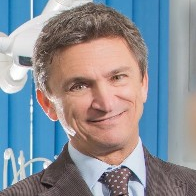Dental Ceramics and Restorative Materials in Prosthodontics: The New Frontier of the Digital Workflow
A special issue of Prosthesis (ISSN 2673-1592).
Deadline for manuscript submissions: 20 September 2024 | Viewed by 849
Special Issue Editors
Interests: prosthodontics; digital dentistry; restorative dentistry; adhesive dentistry; adhesion
Special Issues, Collections and Topics in MDPI journals
Interests: prosthodontics; esthetics; dental materials; ceramics; digital dentistry; scanners; 3D printing; implant prosthodontics
Special Issues, Collections and Topics in MDPI journals
Interests: prosthodontics; maxillofacial prosthetics
Special Issues, Collections and Topics in MDPI journals
Special Issue Information
Dear Colleagues,
In recent years, the development of innovative production technologies and the advancement of restorative materials with increasingly high-performance mechanical and optical characteristics have made digital dentistry a valid clinical reality, particularly in the field of prosthodontics and in the treatment of areas with high esthetic demands. Digital tools have significantly improved both diagnostic processes (CBCT, MRI, and ultrasonography) and clinical protocols (optical impressions, CAD/CAM technologies, and 3D printing). Specifically, in prosthodontics and restorative dentistry, the introduction of digital planning and previsualization software, as well as the use of intraoral scanning systems, has greatly improved communication with patients, the sharing of treatment plan objectives, and operative and psychological comfort. Furthermore, the introduction of increasingly high-performance production technologies has made it possible to manufacture prostheses entirely through a digital workflow. The implementation of advanced technologies (CAD/CAM, laser sintering, melting, and 3D printing) in daily clinical practice has received a significant push from the development of innovative restorative materials. These improvements have significantly expanded the clinical options in prosthetic rehabilitation, both for natural teeth and implants. The primary aim of this Special Issue is to collect clinical and experimental investigations about the use of the digital workflow in prosthetic rehabilitations, both tooth- and implant-supported.
Prof. Dr. Roberto Sorrentino
Prof. Dr. Fernando Zarone
Dr. Gennaro Ruggiero
Guest Editors
Manuscript Submission Information
Manuscripts should be submitted online at www.mdpi.com by registering and logging in to this website. Once you are registered, click here to go to the submission form. Manuscripts can be submitted until the deadline. All submissions that pass pre-check are peer-reviewed. Accepted papers will be published continuously in the journal (as soon as accepted) and will be listed together on the special issue website. Research articles, review articles as well as short communications are invited. For planned papers, a title and short abstract (about 100 words) can be sent to the Editorial Office for announcement on this website.
Submitted manuscripts should not have been published previously, nor be under consideration for publication elsewhere (except conference proceedings papers). All manuscripts are thoroughly refereed through a single-blind peer-review process. A guide for authors and other relevant information for submission of manuscripts is available on the Instructions for Authors page. Prosthesis is an international peer-reviewed open access semimonthly journal published by MDPI.
Please visit the Instructions for Authors page before submitting a manuscript. The Article Processing Charge (APC) for publication in this open access journal is 1600 CHF (Swiss Francs). Submitted papers should be well formatted and use good English. Authors may use MDPI's English editing service prior to publication or during author revisions.
Keywords
- restorative materials
- digital dentistry
- prosthodontics
- prosthesis







